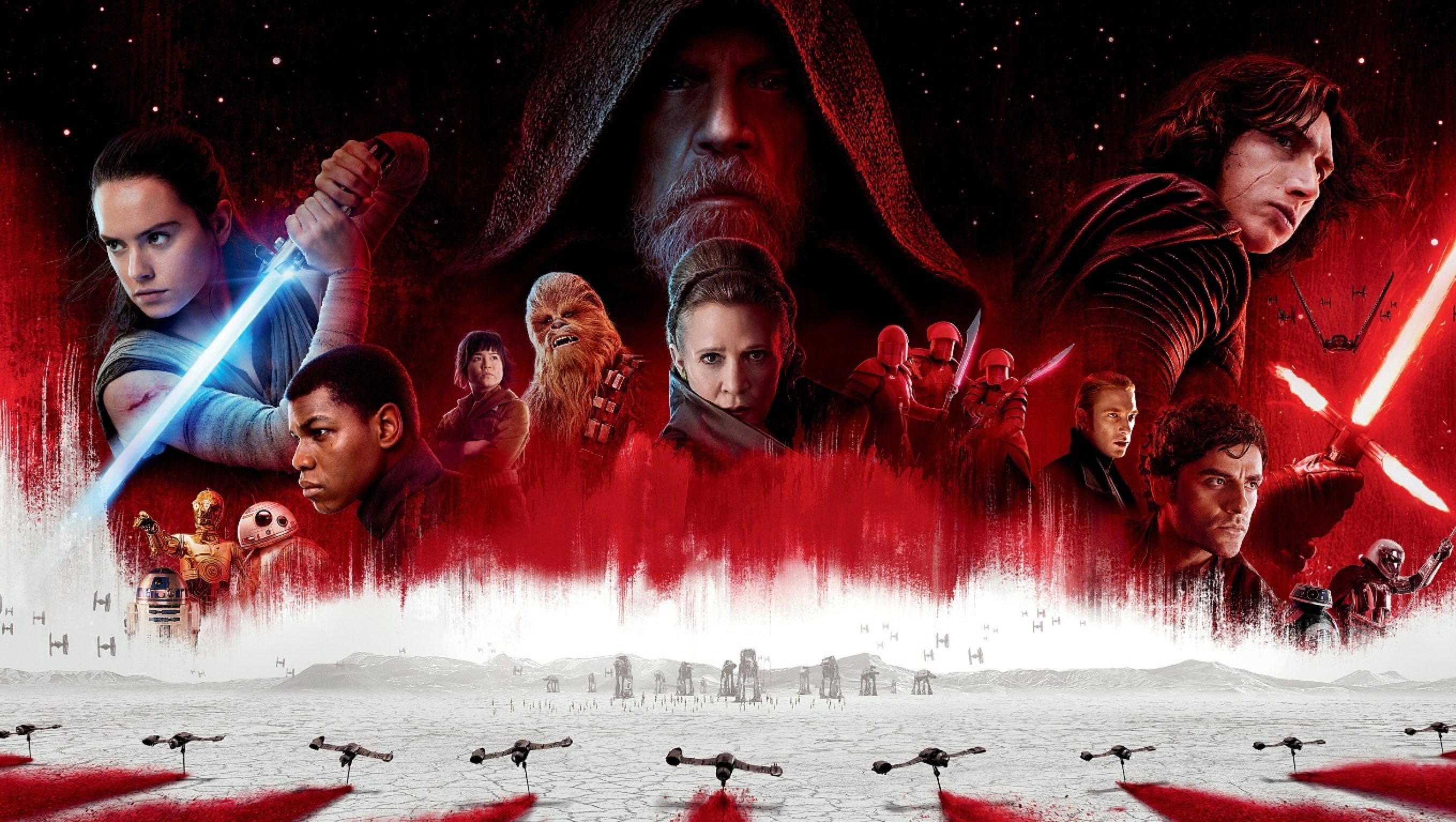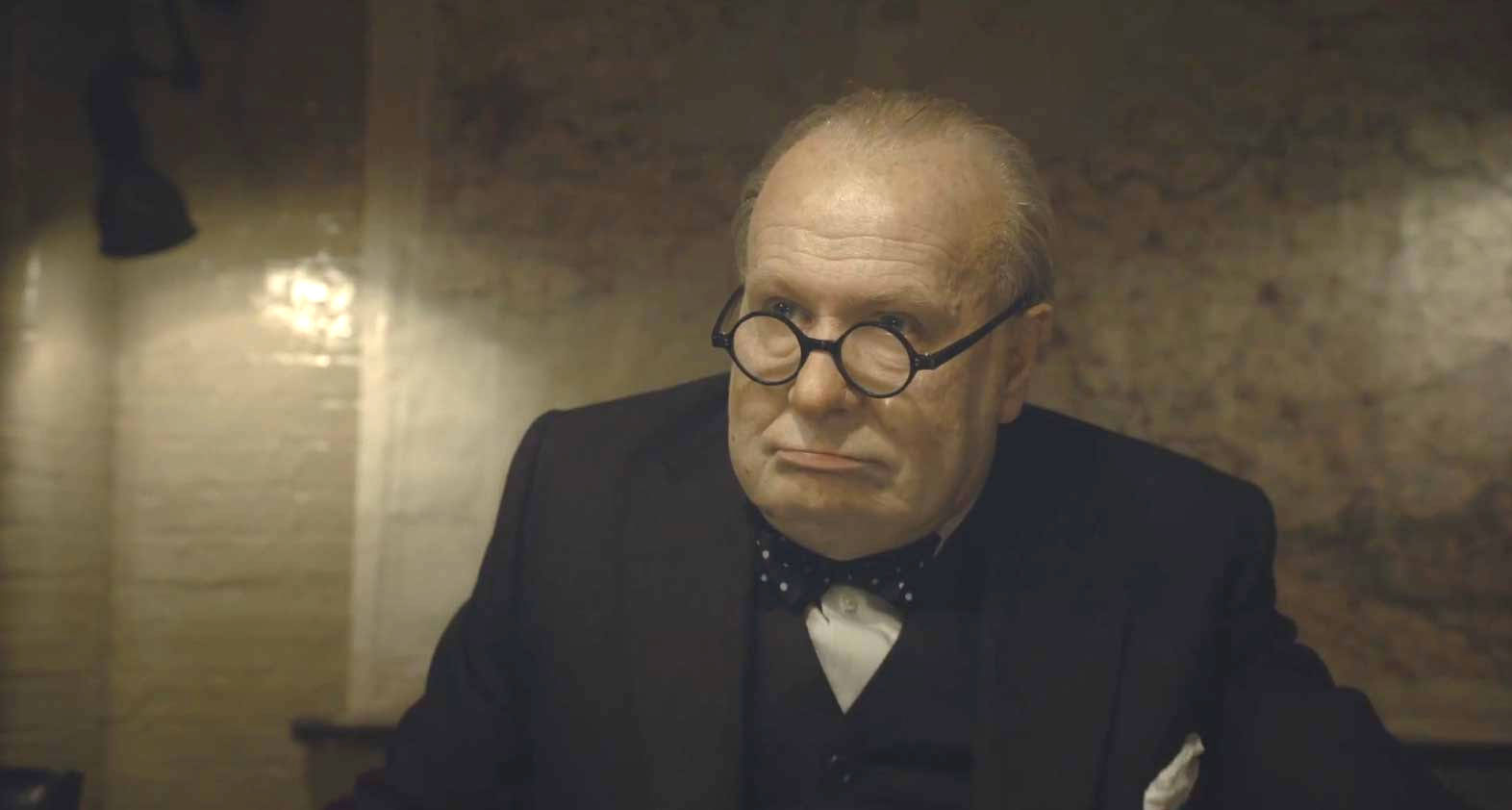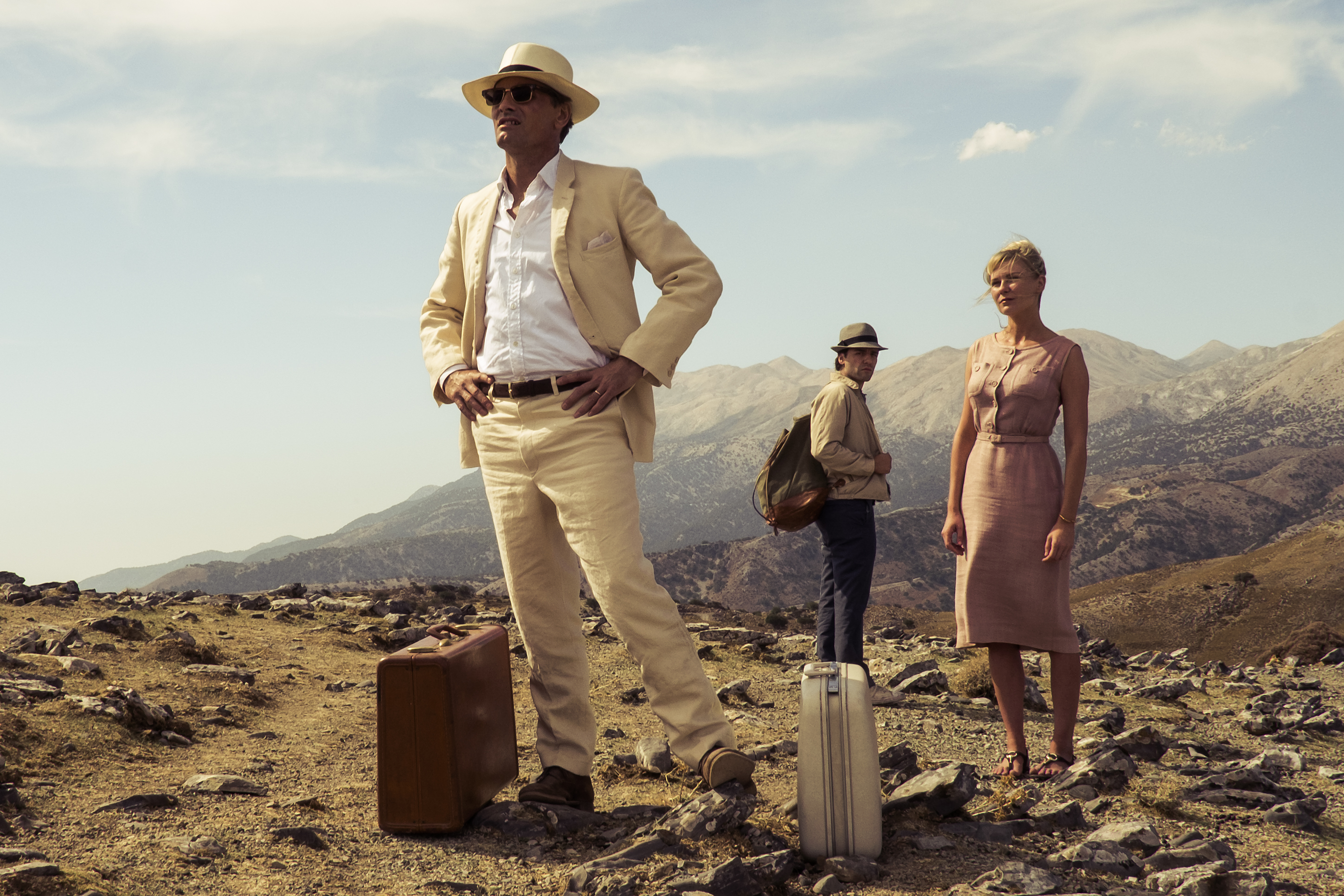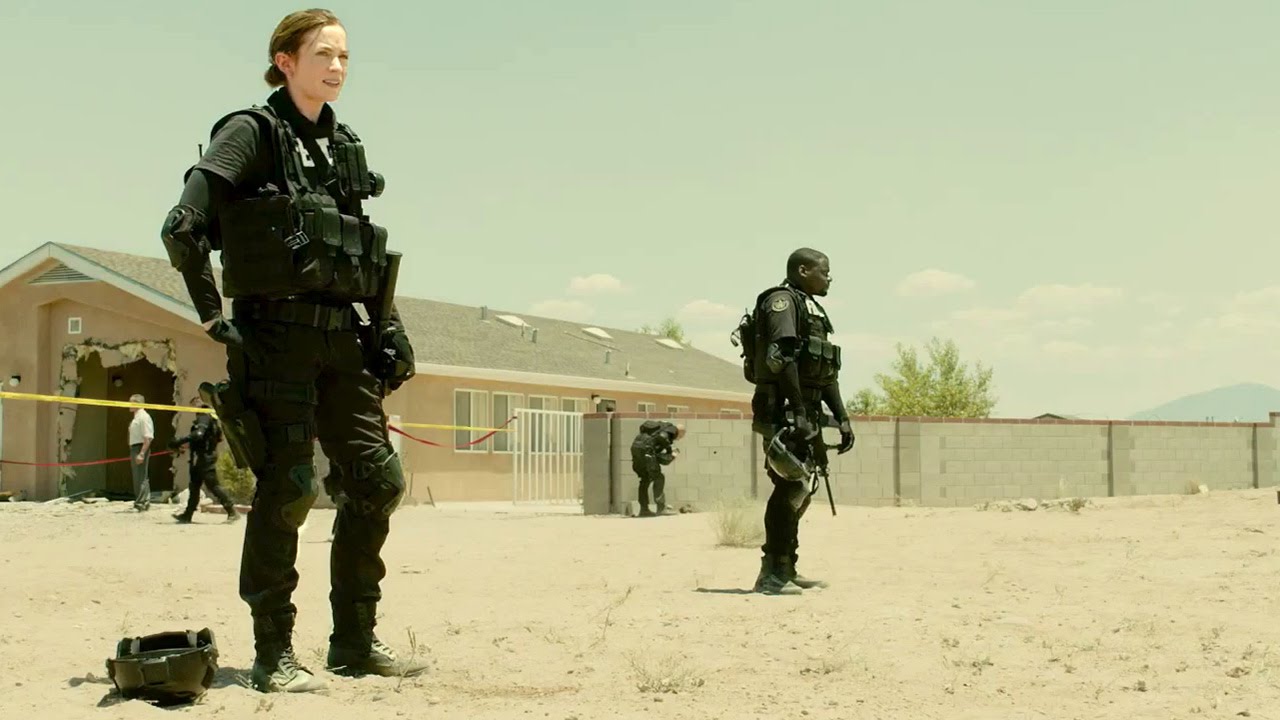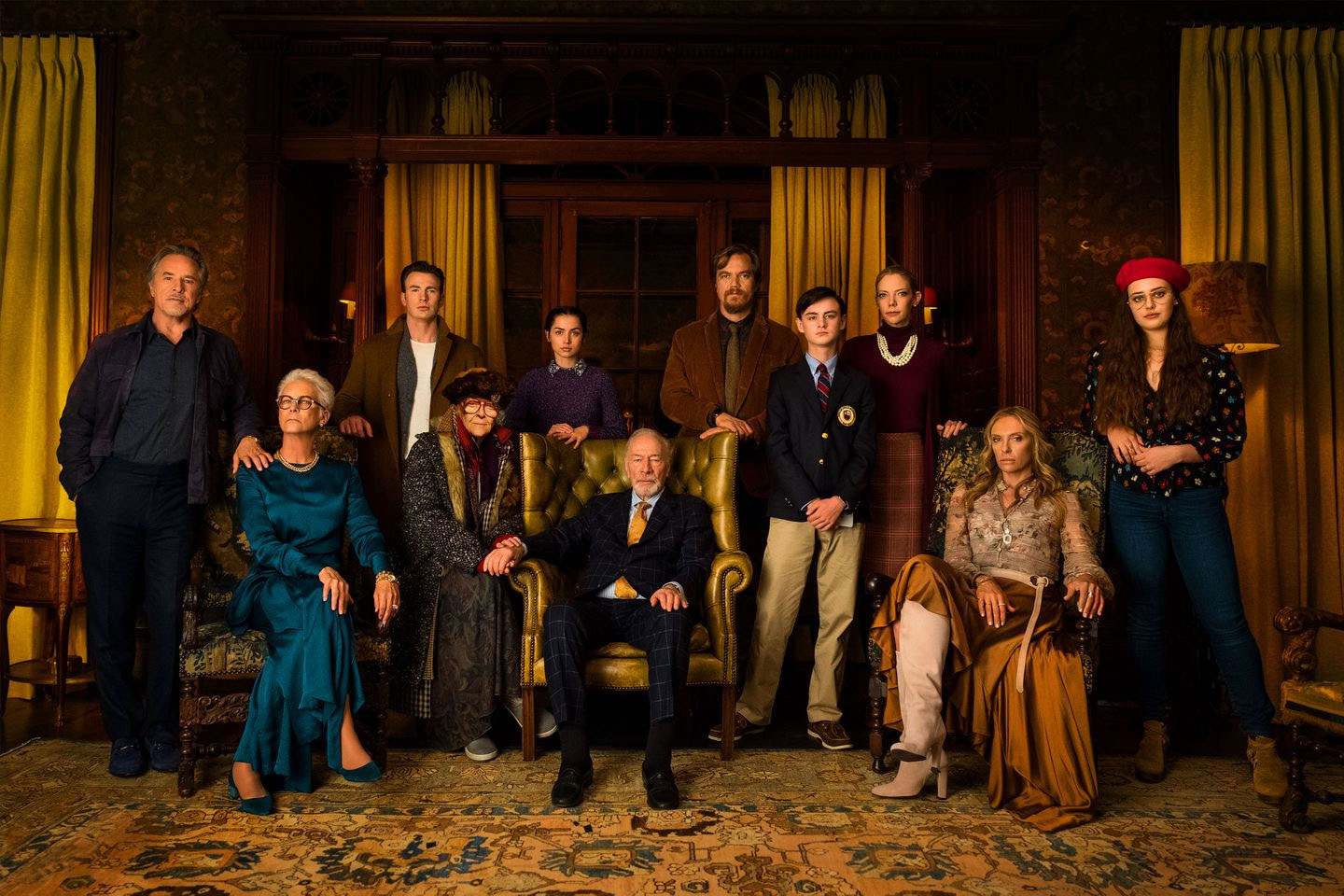Star Wars: The Last Jedi (2017, Dir. Rian Johnson):
For me, I go back and I think about when I was a kid in Colorado, in my backyard, and I look up, thinking about Luke staring at the two suns. I would look up in Colorado—one horizon is always mountains. I remember looking at the mountains and thinking about what adventures are going on in those mountains. It sounds very cheesy when I say it, but I really do just tag back into that feeling of the possibility of adventure that Star Wars gave me. . . . As opposed to design or any number of any other things . . . the thing I’m really focusing on is, how did it make me feel when I was a kid?
— Rian Johnson
“It is the doom of men that they forget,” says Merlin in Excalibur; it is the doom of Star Wars that no one forgets. Now in its fourth decade of existence, each entry of the saga is judged against the high standards of the past (or at least, what our nostalgia-ridden brains perceive as the past). Can the latest film be as good as the originals? Can it recapture the wonder and exhilaration? Star Wars might have begun as a gee-whiz collision of Flash Gordon serial fun with cutting-edge moviemaking, but the very act of watching it is now the equivalent of attending a colloquium.
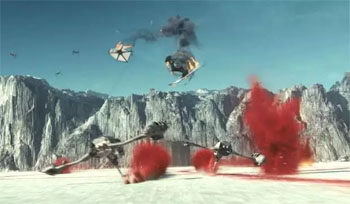 Since assuming control of the Star Wars brand, Disney has been all too aware of the need to live up to expectations. Thus you have J.J. Abrams’ Episode VII: The Force Awakens, which all but announced itself as a replay of Episode IV: A New Hope. As was typical for an Abrams production, the film force-fed familiar story beats to the audience for easy consumption. Once again we had rebellions and evil orders, planet-size weapons and light saber showdowns, young heroes rising to take up the cause of freedom. In its recapitulation of the original trilogy, The Force Awakens didn’t contain anything original, but it was a smoothly functioning Pavlovian machine, leaving behind enough juicy mysteries to keep the fans salivating for the next installment. For instance: What was the deal with plucky heroine Rey (Daisy Ridley)? How did she become so formidable with the Force, and who were her real parents? Why did intergalactic hero Luke Skywalker (Mark Hamill) go into hiding while the universe was going to pot? Who was the shadowy Supreme Leader Snoke (voiced by Andy Serkis), and how did he come to sway Han and Leia’s child Ben (Adam Driver) to the dark side, thus creating the psychotic Kylo Ren? If the answers to these questions turned out to be awfully similar to answers to similar questions in previous trilogies, so much the better. George Lucas has been ridiculed for his observation “It’s like poetry…it rhymes,” in reference to the disastrous Star Wars prequels, but he was merely articulating what many Star Wars fans want: the same stanzas over and over, wrapped in shiny new packaging.
Since assuming control of the Star Wars brand, Disney has been all too aware of the need to live up to expectations. Thus you have J.J. Abrams’ Episode VII: The Force Awakens, which all but announced itself as a replay of Episode IV: A New Hope. As was typical for an Abrams production, the film force-fed familiar story beats to the audience for easy consumption. Once again we had rebellions and evil orders, planet-size weapons and light saber showdowns, young heroes rising to take up the cause of freedom. In its recapitulation of the original trilogy, The Force Awakens didn’t contain anything original, but it was a smoothly functioning Pavlovian machine, leaving behind enough juicy mysteries to keep the fans salivating for the next installment. For instance: What was the deal with plucky heroine Rey (Daisy Ridley)? How did she become so formidable with the Force, and who were her real parents? Why did intergalactic hero Luke Skywalker (Mark Hamill) go into hiding while the universe was going to pot? Who was the shadowy Supreme Leader Snoke (voiced by Andy Serkis), and how did he come to sway Han and Leia’s child Ben (Adam Driver) to the dark side, thus creating the psychotic Kylo Ren? If the answers to these questions turned out to be awfully similar to answers to similar questions in previous trilogies, so much the better. George Lucas has been ridiculed for his observation “It’s like poetry…it rhymes,” in reference to the disastrous Star Wars prequels, but he was merely articulating what many Star Wars fans want: the same stanzas over and over, wrapped in shiny new packaging.
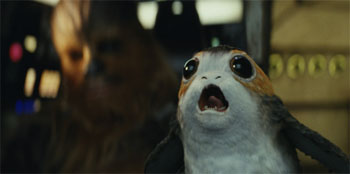 Right off the bat, Rian Johnson’s Episode VIII: The Last Jedi takes a battering ram to most of those expectations. A tense opening standoff between the good guys and the sneering bad guys is punctured by a “Can you hear me now” gag, and topped with a “your momma” joke, of all things. The resulting skirmish hits all the usual beats of desperation and triumph, but the victory is strictly Pyrrhic: a bunch of crossed-out icons on a display denoting the overwhelming number of Resistance casualties. The Force Awakens concluded on a cliffhanger of great portent, as Rey met Luke for the first time and offered his light saber back to him. The moment can be read as Abrams handing the baton to Johnson, almost pleading: I set all these wheels in motion, can you please keep it rolling from here? Johnson’s riposte is as swift as a punchline: Luke tossing the light saber over a cliff as if it’s a crumpled-up piece of paper. When Rey asks him to return and save the universe one more time, our formerly stalwart hero responds with contempt: “You expect me to use a laser sword to take on the whole First Order?” (Referring to a light saber as a laser sword, the horror!) Remember those cutesy little Porg creatures featured in the trailer? How do you feel about them on the end of a barbecue skewer? (Hey, Chewbacca was hungry.) What the dickens is going on?
Right off the bat, Rian Johnson’s Episode VIII: The Last Jedi takes a battering ram to most of those expectations. A tense opening standoff between the good guys and the sneering bad guys is punctured by a “Can you hear me now” gag, and topped with a “your momma” joke, of all things. The resulting skirmish hits all the usual beats of desperation and triumph, but the victory is strictly Pyrrhic: a bunch of crossed-out icons on a display denoting the overwhelming number of Resistance casualties. The Force Awakens concluded on a cliffhanger of great portent, as Rey met Luke for the first time and offered his light saber back to him. The moment can be read as Abrams handing the baton to Johnson, almost pleading: I set all these wheels in motion, can you please keep it rolling from here? Johnson’s riposte is as swift as a punchline: Luke tossing the light saber over a cliff as if it’s a crumpled-up piece of paper. When Rey asks him to return and save the universe one more time, our formerly stalwart hero responds with contempt: “You expect me to use a laser sword to take on the whole First Order?” (Referring to a light saber as a laser sword, the horror!) Remember those cutesy little Porg creatures featured in the trailer? How do you feel about them on the end of a barbecue skewer? (Hey, Chewbacca was hungry.) What the dickens is going on?
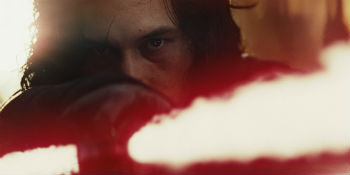 “This is not going to go the way you think.”
“This is not going to go the way you think.”
— Luke Skywalker
What is going on has much to do with Johnson, who introduces a bunch of new notes to the saga. Post-modern noir is Johnson’s stock-in-trade: his previous major films, Brick and Looper, were hard-boiled thrillers re-imagined in different genre contexts (high school drama and dystopian sci-fi, respectively). Now he brings that sensibility to the big-budget fantasy machine of Star Wars, and the results are sometimes surprising, and sometimes jarring. If Star Wars has been a fairy tale up to now, The Last Jedi is drenched with noir fatalism: every attempt to remedy a situation leads to failure, the best-laid plans of heroes and villains alike go horribly astray, and the best you can do is simply stay alive and fight another day. The ghost of Yoda (Frank Oz, sounding more like Grover with each succeeding film) is around to put too fine a point on it: “The greatest teacher failure is.” To counterbalance (some would say neutralize) that darkness, Johnson ups the quotient of smart-alecky wisecracks. Even straight-arrow Luke gets in on the quips. When Rey says she’s from nowhere, he replies, “Nobody is from nowhere.” “Jakku,” Rey admits. “Yeah, that’s pretty much nowhere,” Luke agrees.
Elsewhere, Johnson pokes gentle fun at the Star Wars legacy. We all knew Kylo Ren was a Darth Vader wannabe, and his master Snoke now expresses it in no uncertain terms: “You’re no Vader. You’re just a child in a mask.” Yoda himself is none too enamored of what has gone before — referring to the old Jedi teachings, he quips, “Page-turners, they are not.” There’s even a visual pun that’s a straight reference to the granddaddy of all Star Wars parodies, Hardware Wars (rest assured, you’ll learn how the First Order keeps its uniforms well-pressed). How well you take these jibes will likely depend on how much you’re invested in the original mythos, but there’s no mistaking the film’s mission statement, summed up by Kylo Ren: “Let the past die. Kill it, if you have to. That’s the only way to become what you are meant to be.” Bold words for a franchise that has grown dependent on satisfying built-in audience expectations.
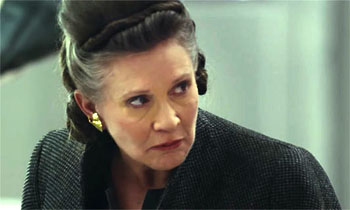 Johnson knows how to toy with the basic formula just enough to pull off some genuine shocks. Both Luke and sister Leia (the late Carrie Fisher, more charming and heartfelt than she was in Force Awakens) perform hitherto unseen feats of the Force that will either make you gasp or roll your eyes in disbelief (maybe a bit of both). For the first time in a Star Wars film, we have tricksy little edits and audio sleights of hand, and Rashomon-style flashbacks. The two duels that punctuate the finale don’t even involve light sabers clacking against each other. And then there’s the presence of Benecio del Toro in full scuzz mode as DJ, a universe-weary codebreaker. “If the price is right, I can break into Old Man Snoke’s boudoir,” he purrs in his patented off-kilter style, and for maybe the first time, we’re exposed to grown-up lechery in Star Wars (if you don’t count Jabba the Hutt and his meter-long tongue). DJ even introduces a hint of Realpolitik when he points out that the same greedy weapons merchants who provide the First Order with their arsenal are also supplying the good guys. “It’s all a machine, partner,” he says. “Live free, don’t join.” How would Star Wars die-hards take that one, we wonder?
Johnson knows how to toy with the basic formula just enough to pull off some genuine shocks. Both Luke and sister Leia (the late Carrie Fisher, more charming and heartfelt than she was in Force Awakens) perform hitherto unseen feats of the Force that will either make you gasp or roll your eyes in disbelief (maybe a bit of both). For the first time in a Star Wars film, we have tricksy little edits and audio sleights of hand, and Rashomon-style flashbacks. The two duels that punctuate the finale don’t even involve light sabers clacking against each other. And then there’s the presence of Benecio del Toro in full scuzz mode as DJ, a universe-weary codebreaker. “If the price is right, I can break into Old Man Snoke’s boudoir,” he purrs in his patented off-kilter style, and for maybe the first time, we’re exposed to grown-up lechery in Star Wars (if you don’t count Jabba the Hutt and his meter-long tongue). DJ even introduces a hint of Realpolitik when he points out that the same greedy weapons merchants who provide the First Order with their arsenal are also supplying the good guys. “It’s all a machine, partner,” he says. “Live free, don’t join.” How would Star Wars die-hards take that one, we wonder?
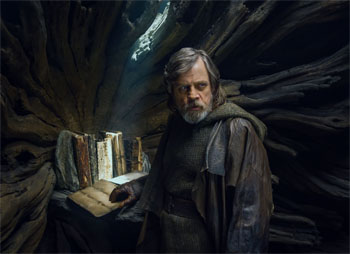 Lest you think that The Last Jedi is a gleeful demolition of everything fans hold dear, it should be noted that Johnson is clearly jazzed by the legacy — he wants to engage with it rather than regurgitate it. Adhering to the “used tech” aesthetic of the original trilogy, there’s plenty of big buttons and switches that need to be pushed and pulled, and a host of original ship designs to ogle at, including a dreadnought armed with some very big guns, and antiquated land speeders that bob up and down like hydrofoils. The two concluding face-offs between the Resistance and the First Order are as visually striking as these films get: a suicidal space battle that climaxes with a moment of utter destruction and awe, and a ground assault on a planet coated with red salt, the vehicles scoring the landscape with trails of crimson death. As with all Star Wars movies, The Last Jedi finds its center with those who use the Force, as Luke, Rey and Ren stage a tug-of-war for each other’s souls. Rey still doesn’t have much of a character (we’re informed of the darkness in her but never see it in action), but Ridley has grown more assured in her performance, and her open features are a perfect contrast to Driver’s unbalanced physiognomy. Whenever the two of them confront each other telepathically or in the flesh, the movie crackles with uncertainty, urgency, and even a whiff of sexual tension. While the shifts in Luke’s character don’t track well with what we know about him from previous movies, he has the closest thing to an arc, and Hamill contributes a top-notch performance. Most refreshingly, Johnson reclaims the Force as a populist concept — no more talk of midochlorians and Jedi bloodlines. “The Force doesn’t belong to the Jedi,” Luke insists, and the heroics in this film are all-inclusive. Everyone — men and women and aliens — have key roles to play, whether it’s nameless bomber pilots, gutsy mechanics like Rose (Kelly Marie Tran), or Rey herself, who turns out to have very modest origins indeed (another enigma from the previous film that’s unceremoniously dismissed). “You have no place in the story,” Ren taunts Rey, but if there’s anything The Last Jedi teaches us, it’s that everyone deserves a place in the story.
Lest you think that The Last Jedi is a gleeful demolition of everything fans hold dear, it should be noted that Johnson is clearly jazzed by the legacy — he wants to engage with it rather than regurgitate it. Adhering to the “used tech” aesthetic of the original trilogy, there’s plenty of big buttons and switches that need to be pushed and pulled, and a host of original ship designs to ogle at, including a dreadnought armed with some very big guns, and antiquated land speeders that bob up and down like hydrofoils. The two concluding face-offs between the Resistance and the First Order are as visually striking as these films get: a suicidal space battle that climaxes with a moment of utter destruction and awe, and a ground assault on a planet coated with red salt, the vehicles scoring the landscape with trails of crimson death. As with all Star Wars movies, The Last Jedi finds its center with those who use the Force, as Luke, Rey and Ren stage a tug-of-war for each other’s souls. Rey still doesn’t have much of a character (we’re informed of the darkness in her but never see it in action), but Ridley has grown more assured in her performance, and her open features are a perfect contrast to Driver’s unbalanced physiognomy. Whenever the two of them confront each other telepathically or in the flesh, the movie crackles with uncertainty, urgency, and even a whiff of sexual tension. While the shifts in Luke’s character don’t track well with what we know about him from previous movies, he has the closest thing to an arc, and Hamill contributes a top-notch performance. Most refreshingly, Johnson reclaims the Force as a populist concept — no more talk of midochlorians and Jedi bloodlines. “The Force doesn’t belong to the Jedi,” Luke insists, and the heroics in this film are all-inclusive. Everyone — men and women and aliens — have key roles to play, whether it’s nameless bomber pilots, gutsy mechanics like Rose (Kelly Marie Tran), or Rey herself, who turns out to have very modest origins indeed (another enigma from the previous film that’s unceremoniously dismissed). “You have no place in the story,” Ren taunts Rey, but if there’s anything The Last Jedi teaches us, it’s that everyone deserves a place in the story.
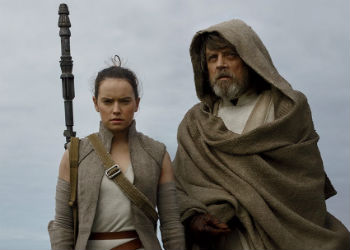 All these grace notes and meditations on the nature of Star Wars are far more interesting than the reheated leftovers of The Force Awakens. Sadly, in most other respects, and especially as a piece of storytelling, The Last Jedi is a messy slog. With Luke and Leia either incapacitated or plain intractable for long stretches, the picture must ride or die on the backs of its younger generation of stars. Whenever we’re away from the central Luke-Rey-Ren triangle, we must put up with none-too-enthralling plotlines: former stormtrooper Finn (John Boyega) getting a lesson in nobility and loyalty from Rose during a mission to a casino planet that recalls the flaccid excesses of the prequels, and headstrong pilot Poe (Oscar Isaac) butting heads with Leia and her second-in-command Holdo (Laura Dern) over issues that would easily be resolved if everyone involved actually, you know, talked to each other. All of the actors are game, but unlike the original trilogy, there is scant room for character progression amidst the busy narrative. Neither is there much room for grandeur: previous films hinted at other realms and side-stories, and it’s these evocative bits that have inspired many a fan, as well as a plethora of Star Wars books and animated series over the years. In contrast, the story (and universe) of The Last Jedi are boiled down to a handful of escaping Resistance ships and pursuing First Order vessels. Apart from the imminent danger to life and limb, and a few declarations about “the spark that will light the fire that will rebuild the republic,” excitement and scope are lacking — which is a major issue when the film is over two and a half hours long.
All these grace notes and meditations on the nature of Star Wars are far more interesting than the reheated leftovers of The Force Awakens. Sadly, in most other respects, and especially as a piece of storytelling, The Last Jedi is a messy slog. With Luke and Leia either incapacitated or plain intractable for long stretches, the picture must ride or die on the backs of its younger generation of stars. Whenever we’re away from the central Luke-Rey-Ren triangle, we must put up with none-too-enthralling plotlines: former stormtrooper Finn (John Boyega) getting a lesson in nobility and loyalty from Rose during a mission to a casino planet that recalls the flaccid excesses of the prequels, and headstrong pilot Poe (Oscar Isaac) butting heads with Leia and her second-in-command Holdo (Laura Dern) over issues that would easily be resolved if everyone involved actually, you know, talked to each other. All of the actors are game, but unlike the original trilogy, there is scant room for character progression amidst the busy narrative. Neither is there much room for grandeur: previous films hinted at other realms and side-stories, and it’s these evocative bits that have inspired many a fan, as well as a plethora of Star Wars books and animated series over the years. In contrast, the story (and universe) of The Last Jedi are boiled down to a handful of escaping Resistance ships and pursuing First Order vessels. Apart from the imminent danger to life and limb, and a few declarations about “the spark that will light the fire that will rebuild the republic,” excitement and scope are lacking — which is a major issue when the film is over two and a half hours long.
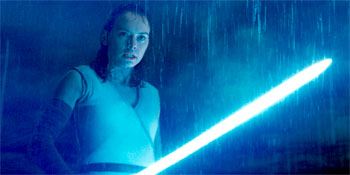 Still, Johnson builds to a stirring throne room contretemps that echoes Return of the Jedi, with an injection of theatrical set design worthy of a Shaw Brothers kung fu classic. The scene builds up a fine lather, then pulls a left turn: Luke’s lightsaber is broken once and for all, and Rey and Ren share a moment that suggests that the story may head in a fresh direction entirely. For an instant, just an instant, you might be fooled into thinking that The Last Jedi will follow through on its promises to kill the past and hurtle towards a new, riskier and possibly thrilling future. Instead, the film backtracks in its final reel. We trudge on to another unnecessary climax, as major characters perform nonsensical deeds (loyal rebel Rose essentially places the entire Resistance at risk to save one person), or are sidelined entirely. “We are what they grow beyond,” Yoda advises Luke earlier in the film, suggesting that it’s now time for the newer characters to shine, but for all of Johnson’s efforts to reshape the legacy, any resonance The Last Jedi has comes from our familiarity and affection for the old guard, especially Hamill’s Luke, who gets a last hurrah that will likely leave you more bemused than captivated. By film’s end, the circle is complete: We’re back where we started, with an empire and a rebellion. Some of the players have changed, but the franchise game remains the same. In effect, the film is nothing more than a clearing of the throat.
Still, Johnson builds to a stirring throne room contretemps that echoes Return of the Jedi, with an injection of theatrical set design worthy of a Shaw Brothers kung fu classic. The scene builds up a fine lather, then pulls a left turn: Luke’s lightsaber is broken once and for all, and Rey and Ren share a moment that suggests that the story may head in a fresh direction entirely. For an instant, just an instant, you might be fooled into thinking that The Last Jedi will follow through on its promises to kill the past and hurtle towards a new, riskier and possibly thrilling future. Instead, the film backtracks in its final reel. We trudge on to another unnecessary climax, as major characters perform nonsensical deeds (loyal rebel Rose essentially places the entire Resistance at risk to save one person), or are sidelined entirely. “We are what they grow beyond,” Yoda advises Luke earlier in the film, suggesting that it’s now time for the newer characters to shine, but for all of Johnson’s efforts to reshape the legacy, any resonance The Last Jedi has comes from our familiarity and affection for the old guard, especially Hamill’s Luke, who gets a last hurrah that will likely leave you more bemused than captivated. By film’s end, the circle is complete: We’re back where we started, with an empire and a rebellion. Some of the players have changed, but the franchise game remains the same. In effect, the film is nothing more than a clearing of the throat.
And yet Johnson provides a tantalizing coda that reestablishes Star Wars as the fairy tale it’s always been: a slave boy on a distant planet who came across Finn earlier in the story replays the film’s climactic events with his buddies using homemade action figures, then ventures into the night, staring at the stars above, playacting with his broom as if it was a light saber. It’s a recreation of Johnson’s own starry-eyed dreams as a youth, as well as a representation of what has been a rite of passage for young filmgoers for four decades now. At moments like these, The Last Jedi plugs into the yearning, aspirational fantasies that fuel the myth. Or you could read the ending as Johnson’s ultimate capitulation to the unbreakable cycles of that same myth: More wars will be fought, newer generations of characters will be shuttled in to replace the old, more toys and action figures will be sold, repeat ad infinitum. How you interpret it all depends on your perspective. As a Jedi knight once said, “Many of the truths we cling to depend greatly on our own point of view.”
